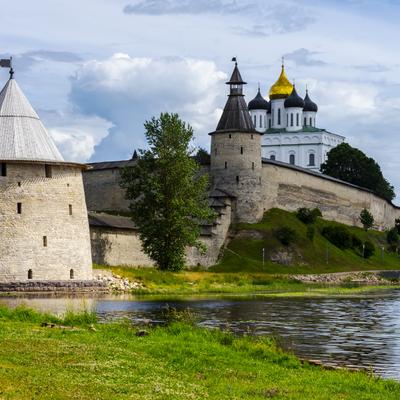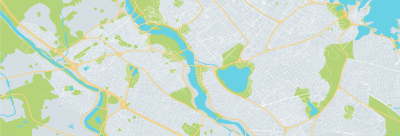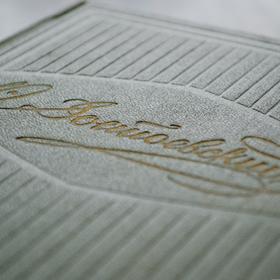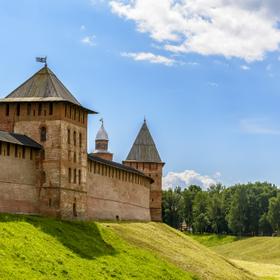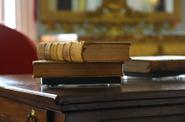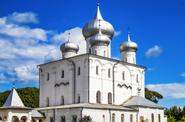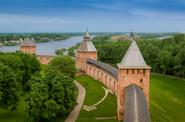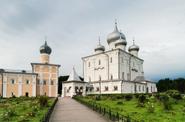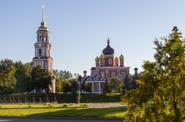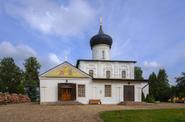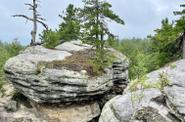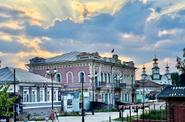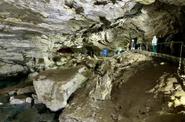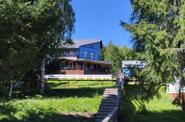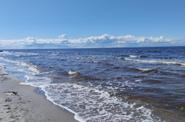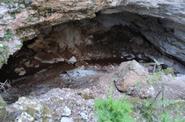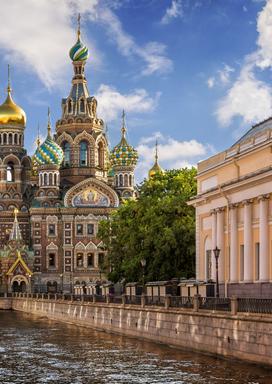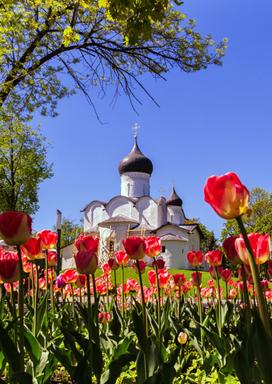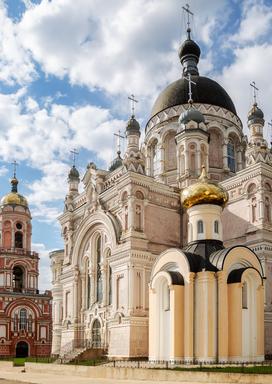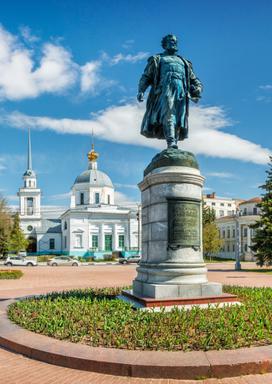07:30 Departure from Ligovsky Prospekt 10 (Oktyabrskaya Hotel).
08:00 Departure from Moskovskaya metro station, Demonstration passage.
Transfer to Syabrenitsy.
Our way from St. Petersburg to Novgorod is the very road whose postal stations gave the names to the chapters of "Travels from St. Petersburg to Moscow" by A. N. Radishchev: Sofia, Tosno, Lyuban, Chudovo, Spasskaya Polist.
Let's talk about the fate of Radishchev, let's recall the history of the publication of his book. You will find out how the writer's grandson, who became a famous marine painter, is connected with Novgorod region.
Excursion to the house Museum of G. I. Uspensky.
Gleb Ivanovich is also known for introducing the term "ditto" into literary usage. It was in the months of October that Uspensky created dozens of works.
Gleb Ivanovich's "Chudovsky" cycle includes famous works: "It came to mind", "Suburban peasant", "On the grass", "Hut on chicken legs" and others. The museum was established in 1935 in the writer's house, where he lived with his family.
Transfer to Chudovo.
Excursion to the house museum of the great Russian poet N. A. Nekrasov "Chudovskaya Luka". Nikolai Alekseevich Nekrasov spent the summer of 1874 Nekrasov spent at his dacha in the Novgorod province.
11 poems were written here, which were included in the "Chudovsky cycle".
Today, this cycle is the golden fund of Nekrasov's poetry. At the Chudovskaya Luka estate, the poet created many lyrical works and poems, and work on the poem "Who lives well in Russia" was completed here.
The agricultural school named after N. A. Nekrasov was opened in 1892 by the poet's sister A. A. Butkevich. Today, the literary exhibition "Nekrasov and the Novgorod Region", an exhibition hall and a 19th-century school classroom are located here.
Lunch.
Transfer to Gruzino.
10 km away. From the town of Chudovo, on the right bank of the Volkhov River, there is the ancient village of Gruzino, first mentioned in the scribe book of Vodskaya Pyatina in 1499-1500.
According to legend, the Apostle Andrew the First-Called, preaching in the Novgorod land, erected the first cross on a high coastal hill, where the Georgian subsequently appeared.
You will see a modern worship cross, a memorial stone, as well as the wooden church of St. Andrew the First-Called on the site of the former estate of A. Arakcheev.
Not far from Gruzino, on the banks of the Volkhov River, there was once the estate of Gabriel Romanovich Derzhavin "Zvanka".
Unfortunately, nothing has been preserved from Derzhavin's estate. But we'll definitely remember him on the way.
Transfer to the villages.
Inspection of the remains of the Arakcheevsky barracks.
It was from the Selishchensk military settlement that the history of military settlements in the first half of the 19th century in the Novgorod province began.
The construction of the complex began in 1818. Architect V. P. Stasov, who is the author of the Holy Spirit Church, participated in the creation of the project.
In 1838, the great Russian poet Mikhail Lermontov was transferred to the Grodno Hussar regiment, which was quartered in the Villages.
From 1843 to 1847, M. T. Loris-Melikov, a representative of an ancient Armenian family, a famous military and statesman, who later became Minister of Internal Affairs under Alexander II, and author of the draft of the first Russian Constitution, served in the regiment. On March 19, 1872, S.P. Diaghilev, a Russian theatrical and artistic figure, was born in Selishchi.
The barracks complex was seriously damaged in the Great Patriotic War and was not reconstructed after its end.
Currently, the ruins of a military camp and a church remain from the military camp.
Transfer to the Varlaamo-Khutyn monastery.
Free time to visit the monastery.
The ashes of the poet Gabriel Derzhavin and his wife Daria are buried in the Transfiguration Cathedral. Derzhavin died in 1816 at the Zvanka estate. The coffin with the body of the deceased was taken to the monastery on a barge along the Volkhov.
Check-in at the hotel.
Free time.


